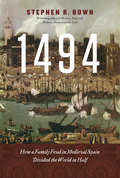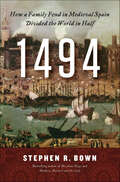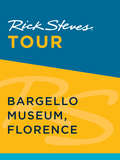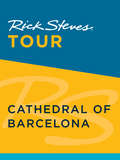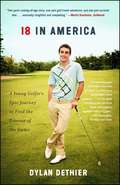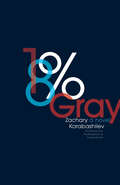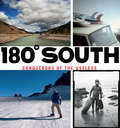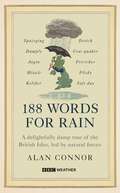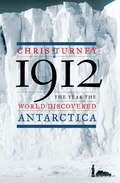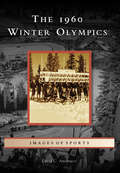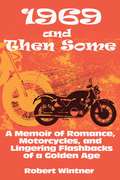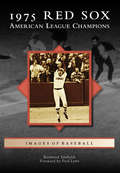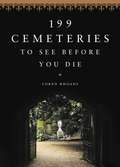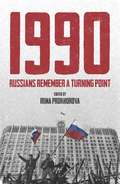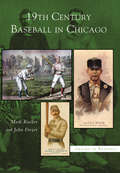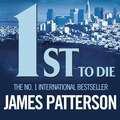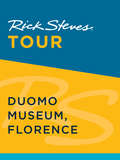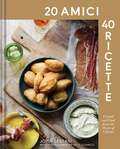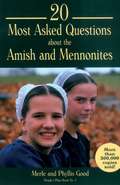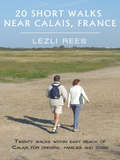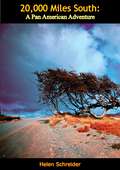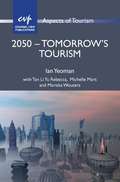- Table View
- List View
1494
by Stephen R. BownWhen Columbus triumphantly returned from America to Spain in 1493, his discoveries inflamed an already-smouldering conflict between Spain's renowned monarchs, Ferdinand and Isabella, and Portugal's João II. Which nation was to control the world's oceans? To quell the argument, Pope Alexander VI - the notorious Rodrigo Borgia - issued a proclamation laying the foundation for the Treaty of Tordesillas, an edict that created an imaginary line in the Atlantic Ocean dividing the entire known (and unknown) world between Spain and Portugal.Just as the world's oceans were about to be opened by Columbus's epochal voyage, the treaty sought to limit the seas to these two favoured Catholic nations. The edict was to have a profound influence on world history: it propelled Spain and Portugal to superpower status, steered many other European nations on a collision course and became the central grievance in two centuries of international espionage, piracy and warfare.At the heart of one of the greatest international diplomatic and political agreements of the last five centuries were the strained relationships and passions of a handful of powerful individuals. They were linked by a shared history, mutual animosity and personal obligations.
1494: How a Family Feud in Medieval Spain Divided the World in Half
by Stephen R. BownAn “exciting” account of the feud between monarchs, clergy, and explorers that split the globe between Spain and Portugal and made the oceans a battleground (Kirkus Reviews).When Columbus triumphantly returned to Spain in 1493, his discoveries inflamed an already-smoldering conflict between Spain’s monarchs, Ferdinand and Isabella, and Portugal’s João II. Which nation was to control the world’s oceans? To quell the argument, Pope Alexander VI—the notorious Rodrigo Borgia—issued a proclamation laying the foundation for the Treaty of Tordesillas of 1494, an edict that created an imaginary line in the Atlantic Ocean dividing the entire known (and unknown) world between Spain and Portugal.Just as the world’s oceans were about to be opened by Columbus’s epochal voyage, the treaty sought to limit the seas to these two favored Catholic nations. The edict had a profound influence on world history: it propelled Spain and Portugal to superpower status, steered other European nations on a collision course, and became the central grievance in two centuries of international espionage, piracy, and warfare.It also began the fight for “the freedom of the seas”—the epic struggle to determine whether the oceans, and thus global commerce, would be controlled by an autocrat’s decree or open to the ships of any nation—a distinctly modern notion championed in the early seventeenth century by Dutch legal theorist Hugo Grotius, whose arguments became the foundation of international law.At the heart of one of the greatest international diplomatic and political agreements of the last five centuries were the strained relationships and passions of a handful of powerful individuals. They were linked by a shared history, mutual animosity, and personal obligations—quarrels, rivalries, and hatreds that dated back decades. Yet the struggle ultimately stemmed from a young woman’s determination to defy tradition and the king, and to choose her own husband.“Incorporates a sprawling cast of characters, including Ferdinand and Isabella, Columbus, Magellan, Sir Francis Drake, and members of the ostentatious Borgia clan, into what is both a judicious synthesis of the surrounding scholarship and an entertaining look at the evolution of international law on the high seas.” —Booklist“A starry love story, a tale of seething jealousies and subterfuge, a political imbroglio, and religious cruelties. It sounds like Shakespeare and it could have very well been the plot of one of his plays.” —Toronto Star“An entertaining and elegantly written voyage into the treacherous seas of religious fanatics, greedy slavers, depraved autocrats, doomed indigenous peoples and desperately brave adventurers in search of fortune.” —Globe & Mail
17 (Rick Steves Tour Ser.)
by Rick Steves Gene OpenshawRick Steves' Pocket guidebooks truly are a "tour guide in your pocket.” Each colorful compact 280-page book includes Rick's advice for prioritizing your time, whether you're spending 1 or 7 days in a city. Everything a busy traveler needs is easy to access: a neighborhood overview, city walks and tours, sights, handy food and accommodations charts, an appendix packed with information on trip planning and practicalities, and a fold-out city map.Rick Steves' Pocket Florence includes the following walks and tours: Renaissance Walk Accademia Tour: Michelangelo's David Uffizi Gallery Tour Bargello Tour Duomo Museum Tour
18 (Rick Steves Tour Ser.)
by Rick StevesRick Steves Pocket guidebooks truly are a "tour guide in your pocket.” Each colorful, compact 280-page book includes Rick's advice for prioritizing your time, whether you're spending 1 or 7 days in a city. Everything a busy traveler needs is easy to access: a neighborhood overview, city walks and tours, sights, handy food and accommodations charts, an appendix packed with information on trip planning and practicalities, and a fold-out city map.Rick Steves Pocket Barcelona includes the following walks and tours: Ramblas Ramble Barri Gotic and Cathedral Tour Picasso Museum Tour Eixample Walk Sagrada Familia Tour
18 in America
by Dylan DethierAn exhilarating account of one remarkable teenager's solo trek to play golf in each of the lower forty-eight states--a compelling coming-of-age story and a surprising look at the equalizing power of the sport in America. At seventeen, Dylan Dethier couldn't help but think he'd never really done anything with his life. So, two months before his freshman year was set to begin, he deferred admission to Williams College. With the reluctant blessing of his parents, Dylan set out on his idea of the Great American Road Trip: play a round of golf in each of the forty-eight contiguous states. What began as the teenage wanderlust of a sheltered New England kid soon became a journey to find America's heart and soul, "to figure out where--and why--golf fit in," and to explore what it means to be a young man today. From a three-dollar nine-holer in rural West Virginia to a municipal course amid the failing factories of Flint, Michigan, and to the manicured greens of Pebble Beach, Dylan explored the variety of the nation's golf courses, the multiplicity of its towns and cities, and, most strikingly of all, the diversity of its people. Hoping to shatter golf's elitist reputation, he would play with war veterans, autoworkers, and a livestock auctioneer and discovered golf's unique capacity to serve as an equalizer. In Wyoming, he decided the state's courses matched his own style of play: "unbridled, rough and tumble in a T-shirt and jeans sort of way." Over one year, 35,000 miles, and countless nights alone in his dusty Subaru, Dylan would shower at truck stops, sleep with an axe beside him, lose his virginity, and meet legends like Phil Mickelson and Michael Jordan. Dylan's eighteenth year was one of many firsts--venturing into the world alone, exploring serious questions about his future, and fulfilling an ambitious quest. In crisp prose and with a wry, engaging voice, this precocious writer takes us beyond his own reflections to weave a poignant portrait of America and its golfers, making 18 in America the perfect gift for the golf enthusiast in your family.
18 in America: A Young Golfer's Epic Journey to Find the Essence of the Game
by Dylan DethierA "winning" (Parade) and "well-conceived" (The New York Times) account of one teenager's solo trek to play golf in each of the lower forty-eight states--"two parts coming-of-age story, one part golf travel adventure, and one part survival test" (Golfweek).Shortly before his freshman year of college was set to begin, seventeen-year-old Dylan Dethier--hungry for an adventure beyond his small town--deferred his admission and, "like Jack Kerouac and Ken Kesey before him, packed his used car and meager life savings and set off to see and write about America" (ABC News/ Yahoo). His goal: play a round of golf in each of the lower forty-eight states. From a gritty municipal course in Flint, Michigan, to rubbing elbows with Phil Mickelson at Quail Hollow, Dylan would spend a remarkable year exploring the astonishing variety of the nation's golf courses--and its people. Over one year, thirty-five thousand miles, and countless nights alone in his dusty Subaru, Dylan showered at truck stops, slept with an ax under his seat, and lost his virginity, traveling "wherever the road took him, with golf as a vehicle for understanding America" (The New York Times). The result is a book that "would be considered fine work by any writer, let alone one so young" (Maine Edge).
18% Gray
by Angela Rodel Zachary KarabashlievAfter Stella disappears, Zack sets off on a trip across America with his memories, a camera, and a duffle bag of dope. Through the lens of the old camera, he starts rediscovering himself by photographing an America we rarely see. His journey unleashes a series of erratic, hilarious, and life-threatening events interspersed with flashbacks to his relationship with Stella.
180° South
by Jeff Johnson Yvon Chouinard Doug Tompkins Chris Malloy180° South takes readers behind the scenes of the film, 180° South, made by Chris Malloy, to learn more about the people who made the original overland journey to Patagonia in 1968, and the repeat journey over ocean and land 40 years later. The book includes stories of events and experiences that inspired Chris Malloy, Yvon Chouinard, and Doug Tompkins to choose paths committed to saving what's left of the wild world. Open it anywhere and enjoy the photographs by the world's leading surf and climbing photographers Jeff Johnson, Jimmy Chin, Scotty Soen, and Danny Moder.
188 Words for Rain: A delightfully damp tour of the British Isles, led by natural forces (an official BBC Weather book)
by Alan Connor‘Alan knows everything, knows everyone, and writes beautifully too.’RICHARD OSMAN‘The man with the contents of the Oxford English Dictionary stored just above his left eyebrow … and he’s quite funny too.’RORY CELLAN-JONES'A gorgeous, funny tour of the British Isles as seen from the clouds.’KONNIE HUQFor fans of THE ETYMOLOGICON and VERY BRITISH PROBLEMS, a delightfully damp tour of the British Isles. Mizzle. Dreich. Raining knives and forks. A real mugga-fisty. A spot of plother...We Brits love talking about the weather. So much so that our islands have hundreds of words and phrases for rain, some self-explanatory and others that really leave us scratching our heads. From a light smirr in Aberdeen to a "it's raining knives and forks!" in the Brecon Beacons, each type of rain tells a story about the people and places it falls on.In this delightfully damp tour of the British Isles, writer and puddle-splasher Alan Connor digs deep into the meaning and quirky histories of over one hundred words for precipitation. He gets caught in a plash in Northumberland, crashes a fox's wedding in Devon and ponders the phenomenon of Brits-who-picnic-in-the-car, in this charming and witty celebration of our very British obsession.
1912: The Year the World Discovered Antarctica
by Chris Turney"The South Pole discovered" trumpeted the front page of The Daily Chronicle on March 8, 1912, marking Roald Amundsen's triumph over the tragic Robert Scott. Yet behind all the headlines there was a much bigger story. Antarctica was awash with expeditions. In 1912, five separate teams representing the old and new world were diligently embarking on scientific exploration beyond the edge of the known planet. Their discoveries not only enthralled the world, but changed our understanding of the planet forever. Tales of endurance, self-sacrifice, and technological innovation laid the foundations for modern scientific exploration, and inspired future generations.To celebrate the centenary of this groundbreaking work, 1912: The Year the World Discovered Antarctica revisits the exploits of these different expeditions. Looking beyond the personalities and drawing on his own polar experience, Chris Turney shows how their discoveries marked the dawn of a new age in our understanding of the natural world. He makes use of original and exclusive unpublished archival material and weaves in the latest scientific findings to show how we might reawaken the public's passion for discovery and exploration
1936 ... On the Continent
by Eugene FodorThis guide takes you on a prewar journey through 30 European countries, including the British Isle.
1960 Winter Olympics, The (Images of Sports)
by David C. AntonucciThe 1960 Olympic Winter Games were a long-shot effort that succeeded beyond the wildest expectations. Working in a sparsely populated valley in the Sierra Nevada with only rudimentary facilities, organizers created a world-class Olympic site in four short years. For the only time in Olympic history, the venues and athlete residence halls were located in a compact, intimate setting that encouraged sportsmanship and interaction between athletes. There was elaborate pageantry in the ceremonies and decorations. The underdog American ice hockey team won the first-ever USA gold medal in that sport. American figure skaters swept gold in the individual events. Well-trained Soviet and Scandinavian athletes dominated the speed skating and cross-country skiing events. American women proved their mettle in the Alpine skiing events. German skiers made surprise upsets in the Nordic combined and ski jumping contests. And CBS-TV was there to capture the most exciting moments and make groundbreaking live broadcasts to American audiences.
1969 and Then Some: A Memoir of Romance, Motorcycles, and Lingering Flashbacks of a Golden Age
by Robert WintnerThe year when everything needed to be experienced and tried, when innocence was tempted, played, and lost.1969 was that pivotal year for the baby boomers. Young and innocent, they were given the ultimate freedoms and were faced with growing up.This touching, hilarious memoir is the true story of a late sixties grand tour of Europe-a life-defining parable, for those who remember and for those who can't. Never before and not since have a handful of seasons so exquisitely defined the difference between right and wrong. With the gift of youth they saw, sensed, and savored the laughably clear distinction between profit motive and greed, between truth and propaganda, between national interest and defense contractors, between a lovely cloud of smoke and the smoke of napalm, and between the phantoms of security and the dangers of complacency and atrophy.Stoned to the gills and then some, these adventurers saw and felt and knew things that no generation before did. Some fully engaged in the counterculture while others merely observed, sticking a left foot in, pulling a left foot out, but not quite jumping to the full hokeypokey.It was an incredible time of self-discovery, of love, and of finding out what you were made of.
1975 Red Sox: American League Champions (Images of Baseball)
by Raymond Sinibaldi Fred LynnThe 1975 American League Champion Boston Red Sox squared off with the Cincinnati Reds in what is widely recognized as one of the best World Series ever played. The Major League Baseball Network has named its sixth game "the greatest game ever played." The Red Sox were led by two rookies, 21-year-old Jim Rice and 22-year-old Fred Lynn, who formed a rookie duo the likes of which baseball had never seen. They combined with a budding superstar in Carlton Fisk and his aging counterpart Carl Yastrzemski to lead the Red Sox attack, while a wily Luis Tiant anchored the pitching staff. After a first-round sweep of the three-time World Champion Oakland A's, they advanced to a Fall Classic that echoes through the ages, and in the words of Carlton Fisk, the Red Sox won "three games to four.
199 Cemeteries to See Before You Die
by Loren RhoadsA hauntingly beautiful travel guide to the world's most visited cemeteries, told through spectacular photography and their unique histories and residents. More than 3.5 million tourists flock to Paris's Père Lachaise cemetery each year. They are lured there, and to many cemeteries around the world, by a combination of natural beauty, ornate tombstones and crypts, notable residents, vivid history, and even wildlife. Many also visit Mount Koya cemetery in Japan, where 10,000 lanterns illuminate the forest setting, or graveside in Oaxaca, Mexico to witness Day of the Dead fiestas. Savannah's Bonaventure Cemetery has gorgeous night tours of the Southern Gothic tombstones under moss-covered trees that is one of the most popular draws of the city. 199 Cemeteries to See Before You Die features these unforgettable cemeteries, along with 196 more, seen in more than 300 photographs. In this bucket list of travel musts, author Loren Rhoads, who hosts the popular Cemetery Travel blog, details the history and features that make each destination unique. Throughout will be profiles of famous people buried there, striking memorials by noted artists, and unusual elements, such as the hand carved wood grave markers in the Merry Cemetery in Romania.
1990: Russians Remember a Turning Point
by Arch Tait Irina ProkhorovaAlthough 1989 and 1991 witnessed more spectacular events, 1990 was a year of embryonic change in Russia: Article 6 of the constitution was abolished, and with it the Party's monopoly on political power. This fascinating collection of documentary evidence crystalises the aspirations of the Russian people in the days before Communism finally fell. It charts - among many other social developments - the appearance of new political parties and independent trade unions, the rapid evolution of mass media, the emergence of a new class of entrepreneurs, a new openness about sex and pornography and a sudden craze for hot-air ballooning, banned under the Communist regime. 1990 is a reminder of the confusion and aspirations of the year before Communism finally collapsed in Russia, and a tantalising glimpse of the paths that may have been taken if Yeltsin's coup had not forced the issue in 1991.
1990: Russians Remember a Turning Point
by Arch Tait Irina ProkhorovaAlthough 1989 and 1991 witnessed more spectacular events, 1990 was a year of embryonic change in Russia: Article 6 of the constitution was abolished, and with it the Party's monopoly on political power. This fascinating collection of documentary evidence crystalises the aspirations of the Russian people in the days before Communism finally fell. It charts - among many other social developments - the appearance of new political parties and independent trade unions, the rapid evolution of mass media, the emergence of a new class of entrepreneurs, a new openness about sex and pornography and a sudden craze for hot-air ballooning, banned under the Communist regime. 1990 is a reminder of the confusion and aspirations of the year before Communism finally collapsed in Russia, and a tantalising glimpse of the paths that may have been taken if Yeltsin's coup had not forced the issue in 1991.
19th Century Baseball in Chicago (Images of Baseball)
by Mark Rucker John FreyerThe Chicago area today hosts two of the most historic major league franchises and half a dozen minor or independent league teams. Baseball's roots run deep in the Windy City. Indeed, it was Chicago businessman William "I'd rather be a lamp-post in Chicago than a millionaire in any other city" Hulbert, who, according to baseball lore, staged the coup that in 1876 would put the National League on the map. The Chicago White Stockings (now ironically called the Cubs) were one of eight charter members, winning the inaugural NL Championship with such legendary names as A.G. Spalding, "Cap" Anson, and Roscoe Barnes.But The National Pastime arrived in Chicago well before the 1876 season, as is proven in this fascinating new book, 19th Century Baseball in Chicago, illustrated with over 150 vintage images.Any local fan of the modern game-whether the action takes place at the "Friendly Confines," 35th & Shields, or the cozy setting of a minor league ballpark out in Kane or suburban Cook County-will enjoy the wealth of information offered in 19th Century Baseball in Chicago.
1st to Die (Women's Murder Club #1)
by James PattersonAs the only woman homicide inspector in San Francisco, Lindsay Boxer has to be tough. But nothing she has seen prepares her for the horror of the honeymoon murders, when a brutal maniac begins viciously slaughtering newly wed couples on their wedding nights. Lindsay is sickened by the deaths, but her determination to bring the murderer to justice is threatened by her own personal tragedy. So she turns to Claire, a leading coroner, Cindy, a journalist and Jill, a top attorney, for help with both her crises, and the Women's Murder Club is born.(P)2012 Headline Digital
20 (Rick Steves Tour Ser.)
by Rick Steves Gene OpenshawRick Steves' Pocket guidebooks truly are a "tour guide in your pocket.” Each colorful compact 280-page book includes Rick's advice for prioritizing your time, whether you're spending 1 or 7 days in a city. Everything a busy traveler needs is easy to access: a neighborhood overview, city walks and tours, sights, handy food and accommodations charts, an appendix packed with information on trip planning and practicalities, and a fold-out city map.Rick Steves' Pocket Florence includes the following walks and tours: Renaissance Walk Accademia Tour: Michelangelo's David Uffizi Gallery Tour Bargello Tour Duomo Museum Tour
20 Amici – 40 Ricette (20 Friends — 40 Recipes): Friends and Food from the Heart of Chianti
by John BersaniTruly experience the Chianti region—with over 40 authentic Tuscan recipes & stories from locals who will feel like friends.&“Just when you think there can&’t possibly be anything left to discover about the food and culture of Tuscany . . . here comes John Bersani with an alluring personal tribute to the place, its cuisine, and most of all, its people."—Domenica Marchetti, author of The Glorious Pasta of Italy and Preserving Italy "Seductive and illuminating, 20 Amici, 40 Ricette is a culinary introduction to the delicious life at the heart of the Chianti region."—Foreword Reviews "One of the most stunning cookbooks I've ever seen."—Meryl Feinstein, founder of Pasta Social Club and author of Pasta Every Day Experience what it&’s like to not only eat in Tuscany, but also how it feels to live there. With traditional Tuscan recipes, heartwarming stories, and insider&’s tips from local chefs and family cooks in 20 Amici – 40 Ricette you&’ll learn—and taste—why that translates to 20 Friends, 40 Great Recipes. Feel like you&’re wandering the streets of Gaiole, a Tuscan village named &“One of Europe&’s Most Idyllic Places to Live&” by Forbes, as you meet local chefs who share their stories and recipes, from a creamy Risotto Semplice (basic risotto) to a tantalizing Branzino al Forno (whole roasted Mediterranean sea bass). Bring a taste of authentic Italian cooking to your kitchen and a touch of Tuscany to your home with the tales from locals who will feel like friends. 20 Amici – 40 Ricette is an Italian cookbook that offers the complete Italian experience: • Taste & See Chianti, Tuscany—More than 80 stunning photographs of street markets, homemade dishes, and more take you on a journey that looks as real as it tastes. • A Local Perspective—Written by a longtime resident of the charming village of Gaiole, this Italian cookbook includes tips and tricks that come from a lifetime of experience. • Beautiful Display—The eye-catching glossy hardcover looks great on any shelf, and is made to hold up after countless nights of amazing Italian cooking. Take your family and friends on a culinary journey to Tuscany with 20 Amici – 40 Ricette.
20 Most Asked Questions about the Amish and Mennonites
by Phyllis Good Merle GoodSensitively answers the most common inquiries about Amish and Mennonite peoples. Authoritative, sympathetic, and thorough. 20 Most Asked Questions looks at origins, dress, pacifism, education, weddings, funerals, and food, as well as many other facets of Amish and Mennonite life. This book has sold more than 200,000 copies.1. What is the difference between the Amish and the Mennonites?2. When and how did these people get started?3. Are they a Christian group or do they represent a different religion?4. Aren’t they a bit naive and backward? Why don’t they accept modern things?5. Does anyone ever join them? Does anyone ever leave?6. Why do they dress that way?7. Is it true they don’t go to war?8. Why are they against education?9. Why are they such good farmers?10. Why don’t they pay Social Security taxes?11. Do any of the Amish or Mennonite groups believe in missions?12. What are their weddings like?13. How are their women and children treated?14. Is food a part of their religion?15. Do they go to doctors and hospitals?16. What about burial?17. Don’t they believe in having fun?18. What are some of their problems?19. Are they growing or dying in number?20. What, in fact, holds them together?
20 Short Walks near Calais, France
by Lezli ReesMany of us are now using the Pet Passport scheme to take our pets with us across the Channel for day trips or holidays in France. This handy guide shows you where to find really good walk places for drivers, families and the dog within easy driving distance of Calais, and to discover some of the extraordinary, and dog-friendly, visitor attractions of this often overlooked part of France.
20,000 Miles South: A Pan American Adventure
by Helen SchreiderHelen and Frank Schreider were true adventurers.Their dream was to drive the length of the Americas, from the town of Circle, Alaska (just outside the Arctic Circle), to the world’s southernmost town, Ushuaia, in Tierra del Fuego. Dinah, their German shepherd, went with them. They are the first people in history to have made this trip. They came back with a whale of a story.The seagoing and mountain-climbing abilities of their amphibious jeep, La Tortuga, were put to a rugged test during the eighteen thrill-packed months the Schreiders were under way. They didn’t just drive from Circle to Ushuaia—much of the way there are no roads. Many of the rivers that slice through the jungle are unbridged; the jungle itself often rears up in an impenetrable wall, and the natives just shake their heads and say, “Turn back.”Undaunted, the Schreiders hacked their way with machetes through the steaming jungles of southern Mexico, were forced to put out through the monstrous surf into the far from pacific Pacific, island-hopped across the reef-ribbed Caribbean, rode out a hurricane at sea, and crawled to almost sixteen thousand feet in the Peruvian Andes. They are the first to have reached South America in a wheeled vehicle under its own power.La Tortuga served them well and came away with her share of honors: she’s the first “ship” ever to have been weighed in on dry land for passage through the Panama Canal and to have driven up to the port captain’s door to pick up her pilot.20,000 MILES SOUTH is a book filled with the happy glow of discovery, the ease, charm, and determination of its young authors, and the fascinations and romance of faraway places.
2050 Tomorrow's Tourism
by Ian YeomanIn 2050, it is predicted that 4.7bn or nearly 50% of the world's population will take an international holiday. But can humankind meet that forecast given the issues of ageing populations, peak oil, the global financial crisis and climate change? This book constructs scenarios from Shanghai to Edinburgh, Seoul to California encompassing complex topics such as human trafficking, conferences, transport, food tourism or technological innovation. This is a blue skies thinking book about the future of tourism and a thought-provoking analytical commentary.
